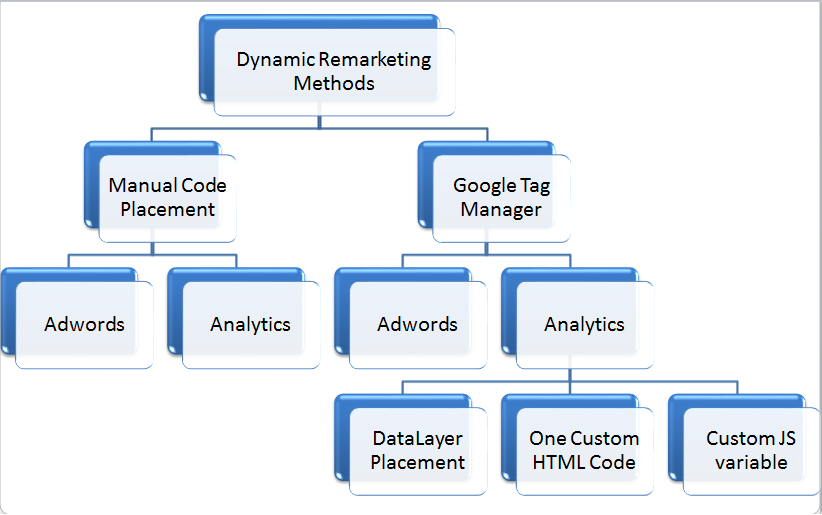Recognizing the Power of Remarketing In Google Analytics
Wiki Article
Utilizing Remarketing in Google Analytics: A Comprehensive Guide
Utilizing remarketing in Google Analytics offers businesses a critical side in getting to out to possible consumers. This overview will lose light on the necessary steps involved in harnessing the complete possibility of remarketing in Google Analytics, leading to improved advertising results.Understanding Remarketing in Google Analytics
Remarketing in Google Analytics permits organizations to strategically target users who have formerly communicated with their web site or mobile app. By leveraging information from Google Analytics, companies can create customized remarketing checklists based upon individual actions, such as pages visited, activities taken, or particular goals attained. This powerful device allows businesses to re-engage with customers who have actually shown interest in their service or products, inevitably enhancing the chance of conversion.Comprehending the different kinds of remarketing strategies is critical for a successful project - What Is “Remarketing” In Google Analytics?. Google Analytics offers different options, consisting of standard remarketing, dynamic remarketing, and remarketing checklists for search ads (RLSA) Each kind offers a distinct objective and can be tailored to satisfy details marketing objectives
Additionally, examining the efficiency of remarketing projects is essential for maximizing outcomes. Google Analytics provides important insights into the efficiency of various remarketing strategies, allowing services to make data-driven choices and improve their targeting strategy. By continually readjusting and keeping an eye on remarketing initiatives based upon analytics information, services can make the most of ROI and drive success in their advertising and marketing initiatives.
Establishing Remarketing Campaigns

After establishing target market listings, the next action is to connect Google Analytics with Google Ads. By connecting these 2 platforms, organizations can effortlessly transfer target market listings from Google Analytics to Google Ads for remarketing objectives. This assimilation enables even more exact targeting and far better campaign efficiency.
When the accounts are linked, businesses can develop remarketing campaigns in Google Ads making use of the audience details previously specified in Google Analytics. These projects can be personalized with specific advertisement creatives, messaging, and bidding approaches to properly re-engage with past site visitors and her comment is here drive conversions. By following these steps, services can leverage the power of remarketing to boost their marketing initiatives and increase ROI.
Making Use Of Audience Segmentation Approaches

Predefined segments in Google Analytics enable you to promptly analyze typical target market groups like new users, returning individuals, or customers that finished a specific goal on your web site. Custom-made sectors, on the other hand, enable you to produce one-of-a-kind sectors based on specific requirements that are crucial to your organization purposes. Dynamic remarketing checklists automatically change based upon individual behavior, showing personalized ads to users who have connected with your website specifically ways.
Analyzing Remarketing Performance Metrics
Upon examining the effectiveness of remarketing campaigns in Google Analytics, the evaluation of essential efficiency metrics offers important understandings into published here target market engagement and conversion prices. By delving into metrics such as click-through prices (CTR), conversion prices, expense per procurement (CPA), and return on advertisement spend (ROAS), marketing experts can evaluate the success of their remarketing initiatives. Analyzing these metrics allows marketers to enhance projects, improve target market targeting, and assign spending plans effectively to improve general remarketing efficiency.Enhancing Remarketing Approaches
When refining remarketing strategies in Google Analytics, concentrating on target market division is paramount for accomplishing project success. By separating your audience into particular segments based on their habits, demographics, or rate of interests, you can customize your advertisements more effectively to every group. This targeted technique raises the chance of engaging users who have already shown rate of interest in your solutions or items, bring about greater conversion prices.One more critical aspect of maximizing remarketing strategies is continuously testing and refining your campaigns (What Is “Remarketing” In Google Analytics?). A/B screening various advertisement creatives, messaging, or deals can aid you recognize what reverberates ideal with your target market and drives one of the most conversions. By analyzing the efficiency of these examinations in Google Analytics, you can make data-driven choices to maximize your remarketing initiatives additionally
Moreover, leveraging dynamic remarketing can significantly improve your project results. This function enables you to show customized ads to individuals based upon their past interactions with your site, showcasing services or items they have actually formerly viewed. By providing customized web content to users get redirected here based upon their rate of interests and actions, vibrant remarketing can assist increase engagement and drive conversions.
Verdict
To conclude, utilizing remarketing in Google Analytics is a strategic strategy to target individuals who have formerly engaged with a site. By developing personalized audience checklists and making use of target market segmentation approaches, services can optimize remarketing advocate enhanced conversion prices. Examining performance metrics and continually enhancing strategies are critical for making the most of the performance of remarketing efforts.Google Analytics supplies different alternatives, including standard remarketing, dynamic remarketing, and remarketing checklists for search ads (RLSA)After establishing up audience listings, the following step is to connect Google Analytics with Google Ads. By connecting these 2 platforms, services can seamlessly transfer target market lists from Google Analytics to Google Advertisements for remarketing purposes.When the accounts are connected, companies can develop remarketing campaigns in Google Ads utilizing the target market notes formerly specified in Google Analytics.When refining remarketing approaches in Google Analytics, focusing on audience division is paramount for achieving project success.
Report this wiki page